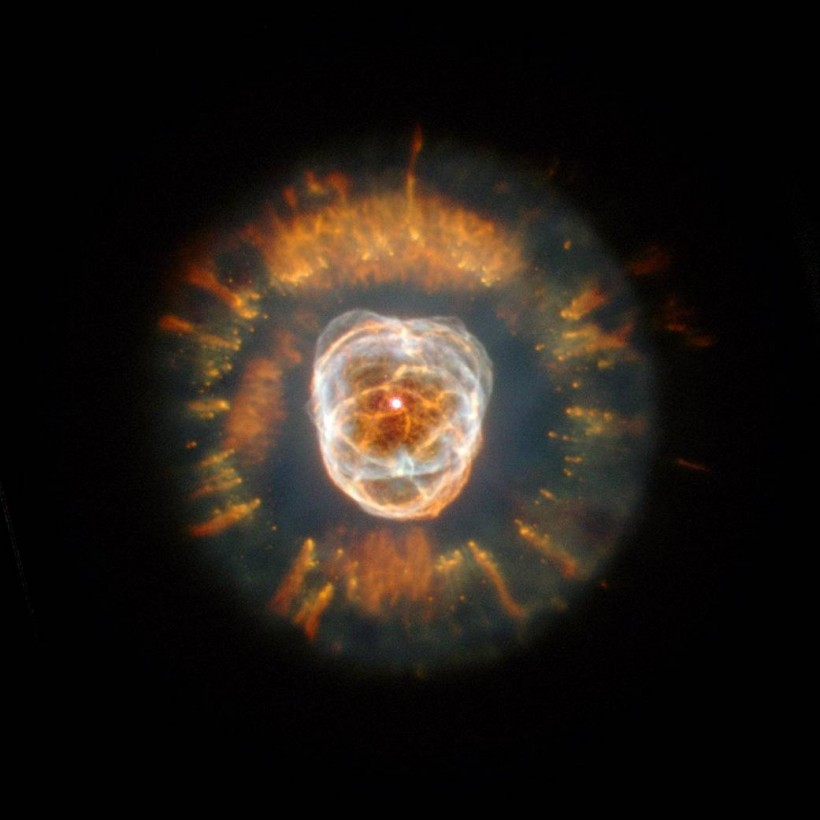There are ways to "hear" cosmic objects even if nobody can hear you scream in space - thanks to an airless vacuum. NASA can help people hear the heavenly symphony of the Milky Way galaxy by using "sonification," or non-speech audio tracks that audibly perceptualize facts. Or, more recently, the "sounds" of the nebula NGC 2392. can sound to our ears like a dreadful message from an extraterrestrial from another planet.

As of Aug. 1, 2020, NASA no longer refers to nebula NGC 2392 as the “Eskimo Nebula,” as it can be considered an insensitive and offensive term
Listen to What NGC 2392 Has to Say
The sonification of NGC 2392 was uploaded to the YouTube feeds of SciTechDaily and NASA's Goddard Spaceflight Center. The nebula NGC 2392 offers the globe an extraordinary audio experience that everyone may listen to and enjoy.
The dazzling remnants of a dying, Sun-like star make up NGC 2392, sometimes known as the "Eskimo" nebula. NASA said Astronomer William Herschel discovered the nebula in the late 18th century. He named it an eskimo because it resembled a face wrapped by a fur parka.
The Hubble Space Telescope and the Chandra X-ray Observatory were utilized by NASA to acquire data on the nebula NGC 2392, a long-known and studied gas cloud in space. Since the researchers were able to record sounds from the nebula and convey it to the public, we now know more about it.
Researchers might make anything out of the noises that the double-shelled planetary nebula collected from space by using the characteristics that Hubble and Chandra could provide. NGC 2392 is 3,000 light-years from Earth, according to SciTechDaily, and the sounds it made provided scientists more to show off for the space object.
ALSO READ: NASA Hubble Space Telescope Shares Stunning Photo of Grand Design Spiral Galaxy [See]
How Experts Sonified The Nebula
Matt Russois, a musician and astrophysicist from Canada, and Canadian musician Andrew Santaguida scanned the image below counterclockwise to create the sonification, Nerdist reported.
Santaguida and Russois switched the nebula's radius into a pitch. The light farther away from the nebula's center corresponds to higher pitched notes. The pitch rises and falls, tracing the contour of the nebula's shell, its spherical layer of ionized gas. The volume of the sonification is also controlled by the nebula's fluctuating brightness.
Despite the sonification's lack of melodies or lyrics, it nonetheless offers a mellow sound that one would hear in space-especially given that space is a silent, empty emptiness.
More Space Mysteries
The vast platform and avenue for learning about the cosmos and how it came into being for the benefit of all people is now space. The goal of this huge investigation, which combines the efforts of several telescopes, is to solve the universe's puzzles by concentrating on a few critical areas that may hold the answers.
There have been several space discoveries, and numerous astronomers are concentrating on the vast amounts of data that the sensors pointed toward space are monitoring. It strives to provide everyone with more information. One investigation focused on a mission to a neutron star that only had a weak signal, which is unusual because most have robust energy fingerprints.
Since there are currently no known answers to the universe's mysteries, many individuals are interested in learning more about the ones that exist in outer space. It could be possible to learn more about a certain system, like the nebula, using the sounds collected by space equipment and transformed into recognizable and enjoyable audio for the general audience to enjoy.
RELATED ARTICLE: NASA's Hubble Space Telescope Shares Photo of Two Galaxies Dancing Near Stream of a Dead Galaxy
Check out more news and information on Space in Science Times.














